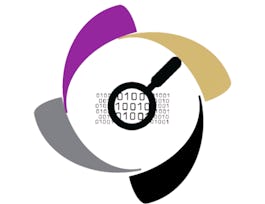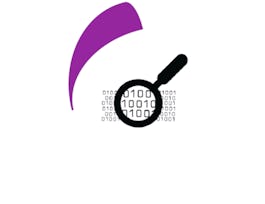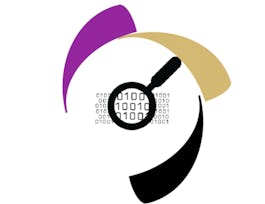Welcome to Course 2 of Introduction to Applied Cryptography. In this course, you will be introduced to basic mathematical principles and functions that form the foundation for cryptographic and cryptanalysis methods. These principles and functions will be helpful in understanding symmetric and asymmetric cryptographic methods examined in Course 3 and Course 4. These topics should prove especially useful to you if you are new to cybersecurity. It is recommended that you have a basic knowledge of computer science and basic math skills such as algebra and probability.


Mathematical Foundations for Cryptography
This course is part of Introduction to Applied Cryptography Specialization
Taught in English
Some content may not be translated


Instructors: William Bahn
17,842 already enrolled
Included with 
Course
(317 reviews)
Details to know

Add to your LinkedIn profile
9 quizzes
Course
(317 reviews)
See how employees at top companies are mastering in-demand skills

Build your subject-matter expertise
- Learn new concepts from industry experts
- Gain a foundational understanding of a subject or tool
- Develop job-relevant skills with hands-on projects
- Earn a shareable career certificate


Earn a career certificate
Add this credential to your LinkedIn profile, resume, or CV
Share it on social media and in your performance review

There are 4 modules in this course
Building upon the foundation of cryptography, this module focuses on the mathematical foundation including the use of prime numbers, modular arithmetic, understanding multiplicative inverses, and extending the Euclidean Algorithm. After completing this module you will be able to understand some of the fundamental math requirement used in cryptographic algorithms. You will also have a working knowledge of some of their applications.
What's included
5 videos11 readings2 quizzes1 discussion prompt
A more in-depth understanding of modular exponentiation is crucial to understanding cryptographic mathematics. In this module, we will cover the square-and-multiply method, Eulier's Totient Theorem and Function, and demonstrate the use of discrete logarithms. After completing this module you will be able to understand some of the fundamental math requirement for cryptographic algorithms. You will also have a working knowledge of some of their applications.
What's included
4 videos9 readings2 quizzes1 discussion prompt
The modules builds upon the prior mathematical foundations to explore the conversion of integers and Chinese Remainder Theorem expression, as well as the capabilities and limitation of these expressions. After completing this module, you will be able to understand the concepts of Chinese Remainder Theorem and its usage in cryptography.
What's included
3 videos5 readings2 quizzes1 discussion prompt
Finally we will close out this course with a module on Trial Division, Fermat Theorem, and the Miller-Rabin Algorithm. After completing this module, you will understand how to test for an equality or set of equalities that hold true for prime values, then check whether or not they hold for a number that we want to test for primality.
What's included
3 videos8 readings3 quizzes1 discussion prompt
Instructors
Offered by
Recommended if you're interested in Computer Security and Networks

University of Colorado System

University of Colorado System

University of Colorado System

University of Colorado System
Why people choose Coursera for their career




Learner reviews
Showing 3 of 317
317 reviews
- 5 stars
74.13%
- 4 stars
18.29%
- 3 stars
5.04%
- 2 stars
1.26%
- 1 star
1.26%
New to Computer Security and Networks? Start here.

Open new doors with Coursera Plus
Unlimited access to 7,000+ world-class courses, hands-on projects, and job-ready certificate programs - all included in your subscription
Advance your career with an online degree
Earn a degree from world-class universities - 100% online
Join over 3,400 global companies that choose Coursera for Business
Upskill your employees to excel in the digital economy
Frequently asked questions
Access to lectures and assignments depends on your type of enrollment. If you take a course in audit mode, you will be able to see most course materials for free. To access graded assignments and to earn a Certificate, you will need to purchase the Certificate experience, during or after your audit. If you don't see the audit option:
The course may not offer an audit option. You can try a Free Trial instead, or apply for Financial Aid.
The course may offer 'Full Course, No Certificate' instead. This option lets you see all course materials, submit required assessments, and get a final grade. This also means that you will not be able to purchase a Certificate experience.
When you enroll in the course, you get access to all of the courses in the Specialization, and you earn a certificate when you complete the work. Your electronic Certificate will be added to your Accomplishments page - from there, you can print your Certificate or add it to your LinkedIn profile. If you only want to read and view the course content, you can audit the course for free.
If you subscribed, you get a 7-day free trial during which you can cancel at no penalty. After that, we don’t give refunds, but you can cancel your subscription at any time. See our full refund policy.

